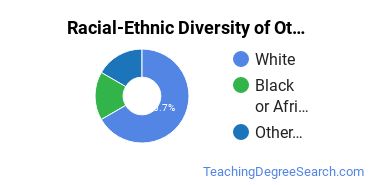Other Education at Nazarene Bible College
If you are interested in studying other education, you may want to check out the program at Nazarene Bible College. The following information will help you decide if it is a good fit for you.Nazarene Bible College is located in Colorado Springs, Colorado and approximately 608 students attend the school each year.
Want to know more about the career opportunities in this field? Check out the Careers in Other Education section at the bottom of this page.
Nazarene Bible College Other Education Degrees Available
- Bachelor’s Degree in Other Education
Nazarene Bible College Other Education Rankings
The other education major at Nazarene Bible College is not ranked on College Factual’s Best Colleges and Universities for Other Education. This could be for a number of reasons, such as not having enough data on the major or school to make an accurate assessment of its quality.
Other Education Student Demographics at Nazarene Bible College
Take a look at the following statistics related to the make-up of the other education majors at Nazarene Bible College.
Nazarene Bible College Other Education Bachelor’s Program

The following table and chart show the race/ethnicity for students who recently graduated from Nazarene Bible College with a bachelor's in other education.

| Race/Ethnicity | Number of Students |
|---|---|
| Asian | 0 |
| Black or African American | 0 |
| Hispanic or Latino | 1 |
| White | 0 |
| International Students | 0 |
| Other Races/Ethnicities | 0 |
Concentrations Within Other Education
If you plan to be a other education major, you may want to focus your studies on one of the following concentrations. The table shows all degrees awarded in this field awarded for all degree levels at Nazarene Bible College. A concentration may not be available for your level.
| Concentration | Annual Degrees Awarded |
|---|
Related Majors
References
*The racial-ethnic minorities count is calculated by taking the total number of students and subtracting white students, international students, and students whose race/ethnicity was unknown. This number is then divided by the total number of students at the school to obtain the racial-ethnic minorities percentage.
More about our data sources and methodologies.
